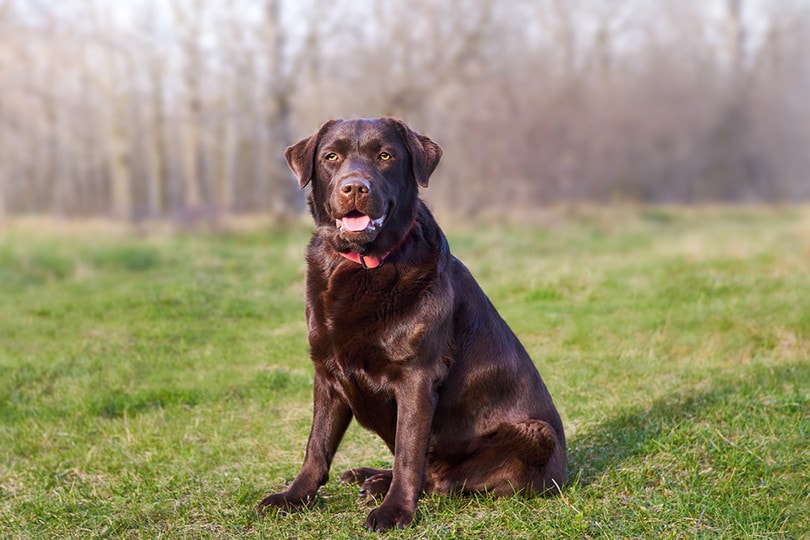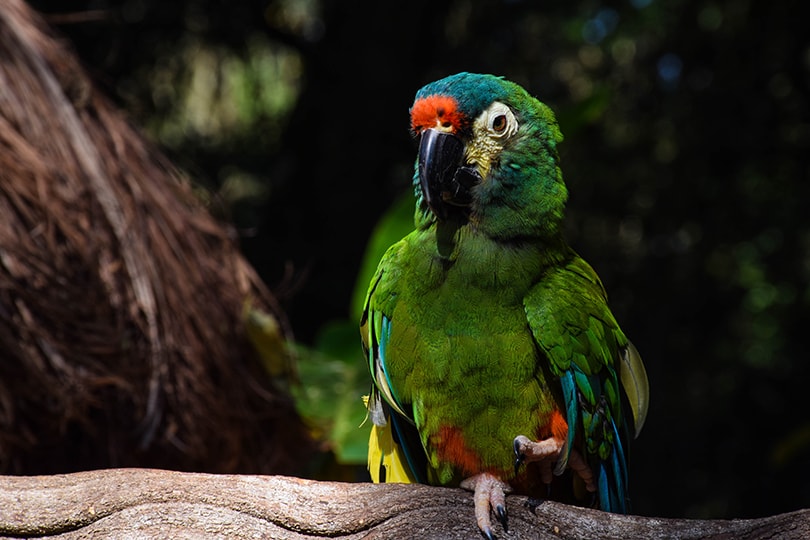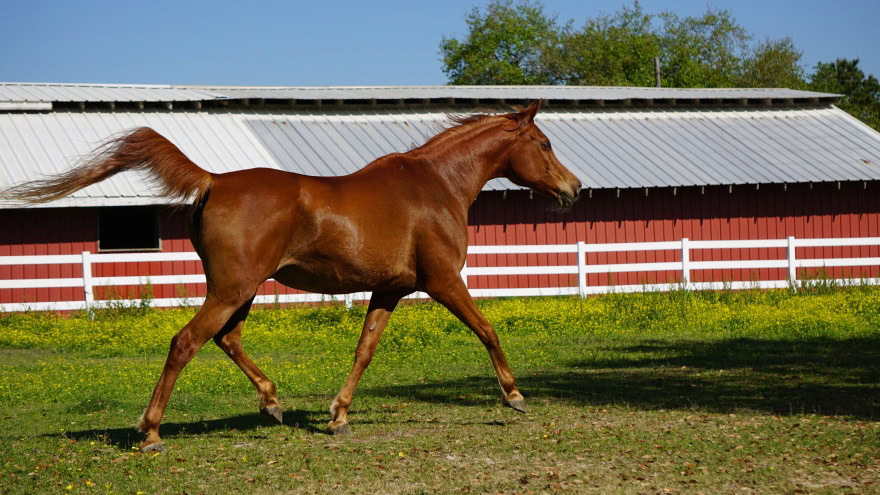Click to Skip Ahead
It’s one thing to see a Labrador Retriever walking down the street, but if they’re a Chocolate Lab? That’s a bonus! The Labrador Retriever is considered one of America’s most popular dogs. They are the ideal family pet due to their classic canine personality: affectionate, eager to please, and having a non-stop drive to play.
Breed Overview
Height:
21–25 inches
Weight:
55–80 pounds
Lifespan:
10–12 years
Colors:
Black, yellow, chocolate
Suitable for:
Families looking for a loyal dog that is eager to please and energetic
Temperament:
Calm, affectionate, energetic, intelligent, loyal
But where did this breed come from? You might be wondering about their heritage if you want to adopt one. Let’s take a history tour to learn all about the Chocolate Labrador Retriever.
Chocolate Labrador Retriever Characteristics

The Earliest Records of the Chocolate Labrador Retriever in History
The earliest origins of the Labrador Retriever are found in Newfoundland, a large island off the coast of Canada. This was long before Canada was even a country, in the 1500s.
The Spanish, French, Portuguese, and English were sending fishers out to the Atlantic Ocean for food. The island of Newfoundland was nearby and isolated, so many travelers rested here while they collected fish to return to their homeland. Naturally, the fishers brought their dogs on the trip to serve as retrieving dogs. Here, they intermingled and the St. John’s Dog was developed.
The St. John’s Dog eventually led to two more breeds, the larger one being called the Newfoundland and the smaller one being called the Labrador Retriever. By the early 1800s, Labrador Retrievers had fallen in love with the water. They developed adaptable skills for working in rivers, streams, and oceans.
Fishers grew proud of their hard-working water dogs. Labradors helped haul fishing nets and long lines and dived for fish that had fallen off the hook. They even dove after their masters’ hats that fell in the water! Eventually, these dogs became a popular selling point for Canadian sailors.

How the Chocolate Labrador Retriever Gained Popularity
Labradors were primarily black in the past, but yellow and chocolate Labs were recorded in the 19th and 20th centuries. These colors weren’t sought after, though.
It wasn’t until 1917 that chocolate was considered a standard Labrador coloring. Still, Chocolate Labs didn’t become popular until the 1960s, when the demand for the color skyrocketed. They especially became popular for dog shows. Everyone wanted a Chocolate Lab, whether as a working dog, sports dog, or pet.
Black labs still dominate the working dog group, but Chocolate Labs are the preferred breed for dog shows.
Formal Recognition of the Chocolate Labrador Retriever
The English Kennel Club officially recognized the Labrador Retriever as a breed in 1903. However, the American Kennel Club (AKC) didn’t register a Labrador Retriever until 1917, when chocolate was considered a standard color.
In 1991, the Labrador Retriever became America’s most popular dog breed, and they’ve remained at or near the top of that list ever since.
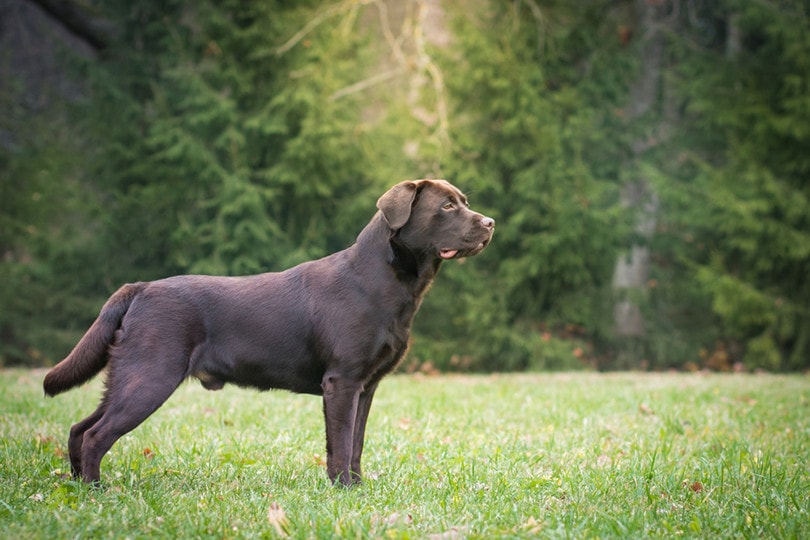

Top 4 Unique Facts About the Chocolate Labrador Retriever
1. The Labrador Retriever Is Almost Waterproof
Don’t be fooled by the Labrador’s short coat: There’s a double layer underneath that traps heat and repels water. This is why the Labrador Retriever became the water-loving dog we all know and love.
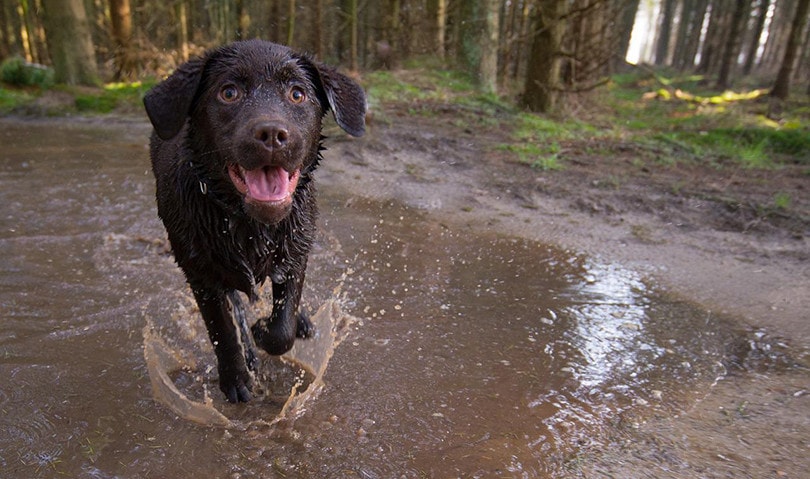
2. English Labs and American Labs Are the Same Breed But Different
English and American Labs have the same breed standards set by the AKC and the United Kennel Club. Still, there are some differences.
The English Lab has a denser coat than the American Lab and is slightly shorter. They’re also bulkier with a broader head and shorter muzzle. You wouldn’t think these two types of Labs were any different until you saw one standing next to the other.
3. The Chocolate Lab Is the Hardest to Find
Chocolate Labs aren’t rare, but they’re not as popular as the black or yellow Lab. Most Labs in the past were black, but a few of these dogs carried the genetic code to create a Chocolate Lab puppy every few litters. Genetic testing has helped breeders make the Chocolate Lab more common, but it still takes some work.

4. The St. John’s Dog No Longer Exists
St. John’s Dogs grew popular in England when English visitors in Canada noticed them. However, some St. John’s Dogs stayed in Newfoundland and eventually went extinct in the 1970s.

Does the Chocolate Labrador Retriever Make a Good Pet?
The Labrador Retriever is known as the “famously friendly” dog. They’re fun, loving, and outgoing all the time. These pups want nothing more than to bond with their owners.
Here’s a bonus: They adore children! They also get along great with other dogs. As for strangers, a Lab will happily walk up to them and request head scratches unless they give this dog a reason to be protective. Labs do require extra time for training, grooming, and exercise. But don’t let this fool you. Labs are notoriously easygoing and eager to please.
Chocolate Labs are a little harder to come by, but they’re certainly not rare. You may have to pay a higher price tag for them, though. Even so, all the wonderful personality traits of a Black or Yellow Lab reside in the Chocolate Lab.
As long as you can give a Labrador Retriever the vigorous exercise required, this breed will be a wonderful addition to your home.

Conclusion
Labrador Retrievers are like the apple pie of dog breeds. It’s hard to imagine America without them. They are one of the top breeds in the country for a reason.
Although the St. John’s Dog no longer exists, we can thank the breed for giving us the fun, loving Labrador Retriever that we all know and love today. Whether your Lab is chocolate, yellow, or black, these dogs will capture your heart—and maybe a bird if you take them hunting. After all, that is what they were bred to do!
Related Reads:
Featured Image Credit:
